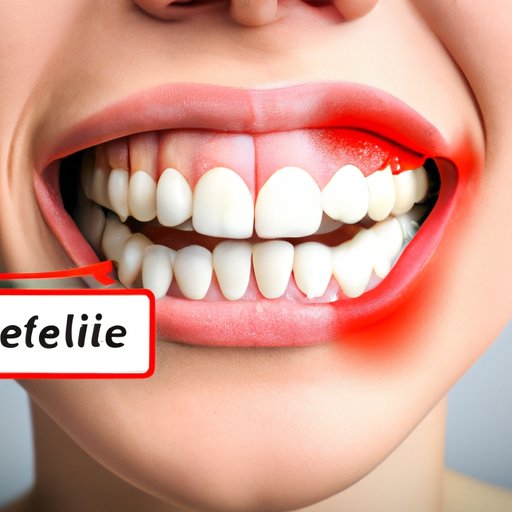
I. Introduction
Many people strive for a bright, white smile, but staining and yellowing can be common problems. Fortunately, there are multiple approaches to teeth whitening. In this article, we will cover practical tips for daily oral hygiene, natural remedies, at-home teeth whitening, the science of teeth whitening, the impact of diet, and the difference between teeth whitening and other cosmetic dentistry options.
II. 6 Practical Tips for a Brighter Smile
One of the most effective methods for whitening teeth is practicing daily oral hygiene habits. Regularly brushing and flossing can help remove surface stains and prevent yellowing. Whitening toothpaste can also be beneficial for achieving a brighter smile. Additionally, avoiding foods and drinks that can stain teeth, such as coffee, tea, and red wine, can help prevent yellowing. Regular dental check-ups and cleanings are also important for maintaining oral health. Finally, proper brushing and flossing techniques can help ensure an effective cleaning.
III. Natural Remedies for Whiter Teeth
Using natural remedies for teeth whitening is appealing for many people due to the cost and potential health benefits. Some popular natural remedies include oil pulling with coconut oil, brushing with baking soda, and rinsing with apple cider vinegar. While these methods have gained popularity, the effectiveness of these remedies is not guaranteed, and there may be potential risks and side effects to consider.
IV. The Dos and Don’ts of At-Home Teeth Whitening
At-home teeth whitening can be a convenient and affordable option for those seeking a brighter smile. It is important to follow best practices, such as avoiding overuse and using products as directed. Avoiding certain products and techniques, such as charcoal-based products or whitening mouthwash, can also prevent damage to teeth and gums. It is recommended to consult with a dentist before beginning any at-home teeth whitening routine.
V. The Science of Teeth Whitening
For those seeking more scientific approaches to teeth whitening, there are various options available. Chemical whitening, which typically involves the use of hydrogen peroxide or carbamide peroxide, is one effective method. Laser teeth whitening is another popular option that involves the use of light to activate the whitening agent. Both techniques have potential risks and benefits to consider before undergoing treatment.
VI. The Impact of Diet on Teeth Whitening
What we eat and drink can significantly impact the color of our teeth. Eating a diet rich in fruits and vegetables can provide vitamins and minerals that promote oral health and whiten teeth. At the same time, foods and drinks that can cause staining and yellowing, such as coffee and wine, should be consumed in moderation or avoided altogether. Straws can be useful for preventing contact between these liquids and teeth.
VII. Teeth Whitening vs. Cosmetic Dentistry: What’s the Difference?
While teeth whitening can improve the color of teeth, cosmetic dentistry offers more intensive options for those who desire a more permanent solution. Veneers and crowns can significantly alter the appearance of teeth through the use of porcelain or composite materials. These options may be more costly and require more time than traditional teeth whitening methods.
VIII. Conclusion
There are many approaches to achieving a brighter smile, and it’s important to find the method that works best for you. Consulting with a dentist and following proper oral hygiene practices is crucial for maintaining oral health. Implementing daily habits, exploring natural remedies, exploring at-home options and scientific treatments, and adopting a healthy diet are all methods that can lead to a brighter smile.




